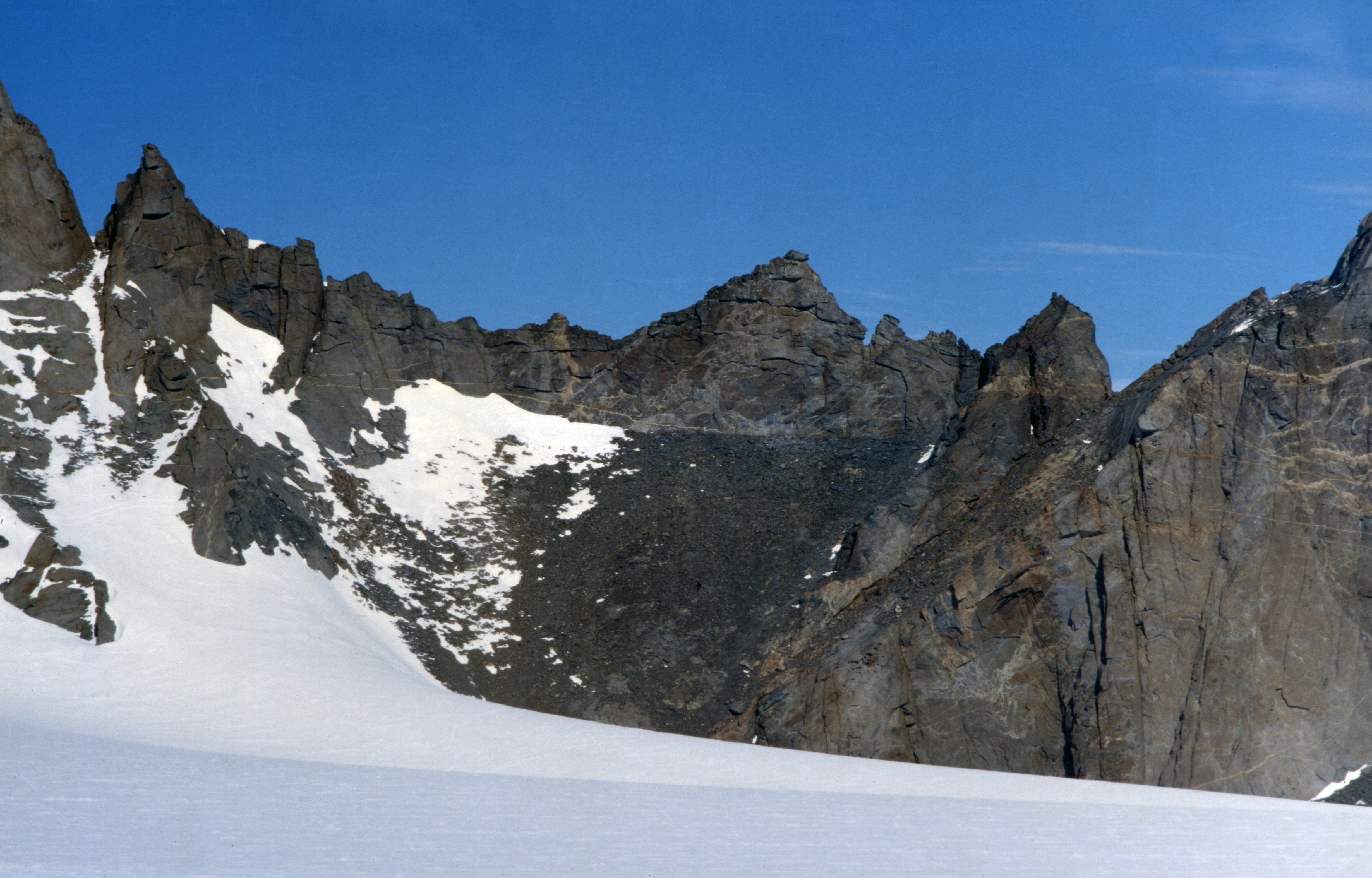|
Spøta Spur
Spøta Spur () is a spur extending from the north-central part of Mount Hochlin Mount Hochlin () is a large ice-topped mountain, high, standing east of Festninga Mountain in the Mühlig-Hofmann Mountains of Queen Maud Land, Antarctica. The Spøta Spur extends from its north-central section. It was mapped by Norwegian cartogr ..., in the Muhlig-Hofmann Mountains, Queen Maud Land. Mapped by Norwegian cartographers from surveys and air photos by the Norwegian Antarctic Expedition (1956–60) and named Spøta (the knitting needle). References {{DEFAULTSORT:Spota Spur Ridges of Queen Maud Land Princess Martha Coast ... [...More Info...] [...Related Items...] OR: [Wikipedia] [Google] [Baidu] |
Mount Hochlin
Mount Hochlin () is a large ice-topped mountain, high, standing east of Festninga Mountain in the Mühlig-Hofmann Mountains of Queen Maud Land, Antarctica. The Spøta Spur extends from its north-central section. It was mapped by Norwegian cartographers from surveys and air photos by the Sixth Norwegian Antarctic Expedition (1956–60) and named for L. Hochlin, a radio operator and dog driver with the expedition (1956–58). See also *Stålstuten Ridge *Tunet Valley References Mountains of Queen Maud Land Princess Martha Coast {{PrincessMarthaCoast-geo-stub ... [...More Info...] [...Related Items...] OR: [Wikipedia] [Google] [Baidu] |
Queen Maud Land
Queen Maud Land ( no, Dronning Maud Land) is a roughly region of Antarctica claimed by Norway as a dependent territory. It borders the claimed British Antarctic Territory 20° west and the Australian Antarctic Territory 45° east. In addition, a small unclaimed area from 1939 was annexed in June 2015. Positioned in East Antarctica, it makes out about one-fifth of the continent, and is named after the Norwegian queen Maud of Wales (1869–1938). In 1930, the Norwegian Hjalmar Riiser-Larsen was the first person known to have set foot in the territory. On 14 January 1939, the territory was claimed by Norway. On 23 June 1961, Queen Maud Land became part of the Antarctic Treaty System, making it a demilitarised zone. It is one of two Antarctic claims made by Norway, the other being Peter I Island. They are administered by the Polar Affairs Department of the Norwegian Ministry of Justice and Public Security in Oslo. Most of the territory is covered by the east Antarctic ic ... [...More Info...] [...Related Items...] OR: [Wikipedia] [Google] [Baidu] |
Sixth Norwegian Antarctic Expedition
The sixth Norwegian Antarctic Expedition (''Den norske antarktisekspedisjonen'') was a scientific expedition to Queen Maud Land in Antarctica. The expedition was based at Norway Station () which was located on the Fimbul Ice Shelf bordering the coast of Queen Maud Land. The expedition carried out survey work and scientific studies over a period of three-four years (1956–1960). The expedition was intended as part of Norway's participation in the International Geophysical Year, 1957-58. The crew set sail from Oslo on board two whaling ships, the ''Polarsirkel'' and ''Polarbjørn'', on 10 November 1956. The expedition was led by Sigurd Gunnarson Helle, a geodesist at Norsk Polarinstitutt. It included a total crew of fourteen researchers which was reduced to nine during the third year. Among their activities were topological mapping of the region. In 1960, King Olav V of Norway instituted the Antarctic Medal The Antarctic Medal is a civil decoration of Norway. Established by ... [...More Info...] [...Related Items...] OR: [Wikipedia] [Google] [Baidu] |
Ridges Of Queen Maud Land
A ridge or a mountain ridge is a geographical feature consisting of a chain of mountains or hills that form a continuous elevated crest for an extended distance. The sides of the ridge slope away from the narrow top on either side. The lines along the crest formed by the highest points, with the terrain dropping down on either side, are called the ridgelines. Ridges are usually termed hills or mountains as well, depending on size. Smaller ridges, especially those leaving a larger ridge, are often referred to as spurs. Types There are several main types of ridges: ;Dendritic ridge: In typical dissected plateau terrain, the stream drainage valleys will leave intervening ridges. These are by far the most common ridges. These ridges usually represent slightly more erosion resistant rock, but not always – they often remain because there were more joints where the valleys formed or other chance occurrences. This type of ridge is generally somewhat random in orientation, often ... [...More Info...] [...Related Items...] OR: [Wikipedia] [Google] [Baidu] |



